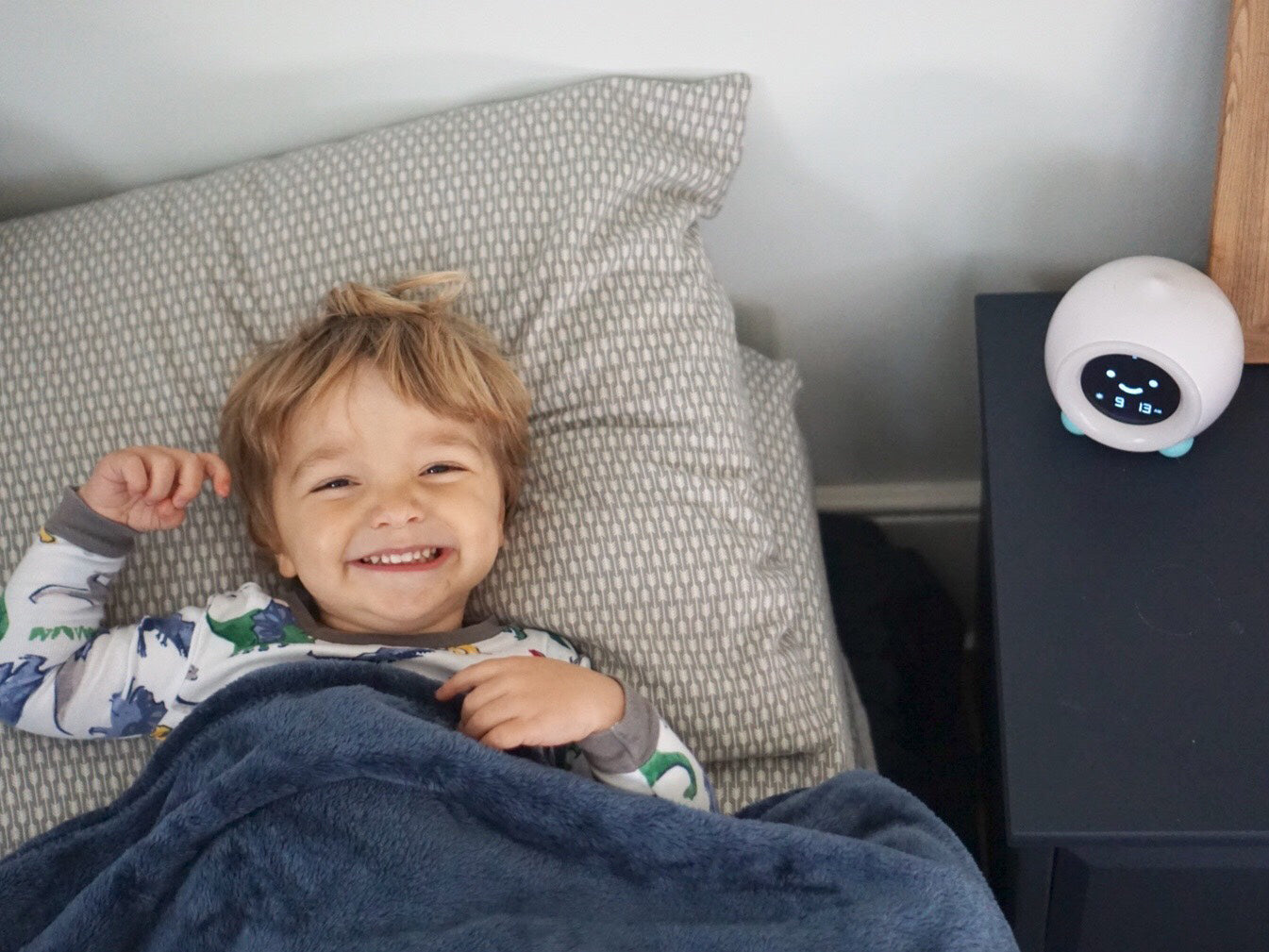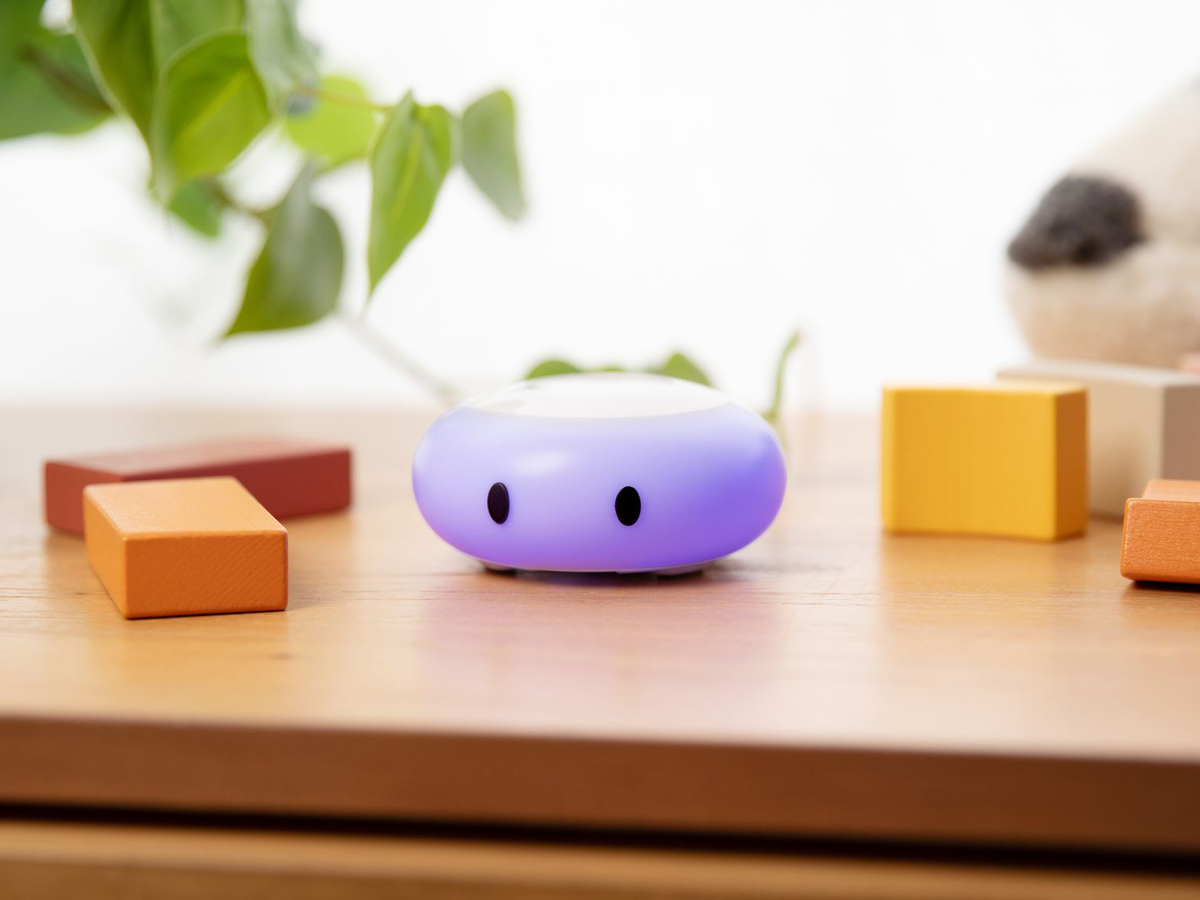
A 12 Step Guide to Success with MELLA
So you've gotten your MELLA, or maybe you're still wondering about whether MELLA will be effective for your little one. Congratulations! By being here, you're one step closer to getting rid of those early morning wake ups.
Here are 12 tips and tricks to integrate MELLA into your family seamlessly.
Tip #1: Introduce MELLA on Day 1 of switching to the toddler bed
If you haven't yet made the switch from crib to toddler bed (or regular bed!), a perfect time to introduce MELLA to your kid will be the very first day you transition him/her. Toddlers hate change (as you are well aware!) and starting a new routine all at once will make the overall transition that much easier.
Tip #2: Let your little one in on the unboxing experience
Even better, hype up MELLA's arrival before it even gets to your doorstep. Make it a BIG DEAL - like a long anticipated arrival of a special friend.
When MELLA arrives, make sure to include your little one in the unboxing experience (although always supervise the occasion and be the one to set it up as MELLA does come with an optional battery!). At this point will also be a good time to ask your kid if they want to give their MELLA its own name. Some fan favorites includes Clocky, Hippo, and Mello.
Tip #3: Introduce MELLA during the daytime, not at night
It will be more effective to introduce MELLA during the day, not right before it's time for bed. This way, you can get your child used to MELLA in his/her bedroom and you can also reinforce how MELLA works throughout the day. This will also help hype the process and make bedtime something to look forward to.
Tip #4: Use easy to understand language
Depending on your child's temperament and age, a sleep training clock may or may not be effective. If your child is extra stubborn and defiant, it may not work as well (or you may need to refer to Tip #12 for extra measures). If your child is too young, he/she may not be able to understand the process or be able to control his/her impulses.
No matter what, you'll want to explain MELLA in simple terms so that your child will know exactly what is expected of them. Something like:
"MELLA has a lot of different colors, which mean different things. If you're not sure what to do, just look at MELLA and he'll/she'll let you know."
If you do not use a night light color with MELLA, you can say:
"If you don't see any light color, that means you need to go back to sleep" or "If you see MELLA sleeping, that means you need to sleep too."
If you do use a night light color with MELLA (we recommend RED), you can say:
"If MELLA is red, that means you need to go back to sleep."
To let them know how to get out bed, you can say:
"If MELLA is green, that means you can come out of your room and find Mommy/Daddy."
MELLA also has an optional Play Period window (you can set it for between 5-30 minutes before the wake up light). During this time, your child should play quietly in his/her room if he/she awakens. You can say something like:
"If MELLA is yellow, that means you can read a book or play with your toys quietly. Mommy/Daddy aren't ready to get up yet so you need to wait for MELLA to turn green."
Quiz them throughout the day about how MELLA works so that they and you can be confident about understanding how it works.
Tip #5: Consider a binary approach
If your kid on the younger side (think less than 3 years old), you may want to choose a binary approach to make things easier to understand. This means turning off the Play Period completely and teaching them that no (or ________ colored) light means stay in bed. GREEN light means leave the room.
Tip #6: Let your little one choose their night light color
Whatever your bedtime ritual is, include MELLA in the routine. Including them in the routine and giving them choices will make bedtime more exciting. This could mean telling MELLA good night, giving MELLA a pat on the Hat, or, if your child is old enough that he/she will not get confused by different light colors, allowing your child to choose MELLA's night light color.
Tip #7: Play games during the day to reinforce color meanings
Tip #8: Set your little one up for success
Slow and steady wins the race! We want to set our children up for success, or else they may feel discouraged and give up. Or even start to disregard the rules completely.
For example, if your child is waking up at 5:00 AM and you want him/her to wake up at 7:00 AM, that will be pretty difficult to do overnight, with or without MELLA. Set MELLA's wake time for a more realistic wake time, like 6:00 AM. Once your child is consistently staying in his/her room until the 6:00 AM green light, you can begin to shift the clock's wake time. Moving the wake time in 10 minute increments will help increase your child's success rate.
The more successful your child is, the more willing your child will be to adhere to the rules in the future.
Tip #9: Give HIGH praise when your child succeeds
Usually, when a child succeeds in waiting until the green light, he/she will want the whole family to know it. He/she may run into your room screaming "MELLA is green!" or "Wake up! MELLA is green! Green means go!" This is your moment to respond with HIGH PRAISE. Lay it on thick and make it known to them how proud you are.
Tip #10: Be consistent
For some parents, MELLA can be a magic bullet as their child takes to it immediately and listens from day one. For many others, it takes time for a child to buy into the idea. This process can take up to a week - for others, it can take a couple weeks. Remain firm and stay committed to starting the day when MELLA is green. This may require you to tweak the sleep and wake times on the clock at first so that you are setting them up for success.
It is critical to be consistent (and patient!) or else the rules will lose their meaning. If your child comes in before MELLA is green, ask them what color MELLA is. Ask them to repeat the rule and return them to their room so that they can have another chance to get it right. When they succeed, refer to Tip #9!
Tip #11: Use MELLA for naps every day
Consistency means using MELLA for naps too. MELLA has a nap timer feature that allows for a green light to appear at the end of the nap. Using MELLA for naps provides even more opportunities for your child to succeed and quickly become familiar with how MELLA works.
Tip #12: Implement additional measures
If MELLA is not effective on its own, consider implementing the following additional measures:
1) Read books about bedtime. Popular favorites include "Llama Llama Red Pajama" by Anna Dewdney, "The Going to Bed Book" by Sandra Boynton, "A Book of Sleep" by Il Sung Na and "Goodnight, Goodnight, Construction Site" by Sherri Duskey.
2) Put up a gate in the doorway of your child's bedroom (but do not lock them in their bedroom!).
3) Implement a sticker reward chart, bedtime pass, and/or treat jar. However, we only recommend the latter as a short term solution to get them used to the change. If you are looking for a reward chart, we recommend our Bedtime Reward Chart and Bedtime Pass Bundle.
Hopefully, with these tips and tricks, your early mornings will quickly a thing of the past.
However, if your little one is still struggling with sleep, head over to our blog post "How to Get My Toddler to Stay in Bed" for even more ideas that may help.
Also in Blog

6 Tips for Parents to Help Kids Adjust to the Fall Back Time Change
Every year, parents brace themselves for that bittersweet event known as the “fall back” — when clocks turn back one hour for the end of Daylight Saving Time (DST). While gaining an hour of sleep sounds amazing in theory, parents of babies and young kids know it usually means one thing: an hour earlier wake-up. Here are six helpful tips to make the “fall back” transition smoother for your family.

6 Helpful Tips for Parents to Navigate the Spring Forward Time Change
Daylight Saving Time (DST) is right around the corner, and for parents of young children and babies, the “spring forward” shift can feel like a daunting challenge. Losing an hour of sleep and adjusting to a new schedule can lead to cranky mornings, disrupted sleep patterns, and general chaos in the household. Fortunately, there are ways to ease the transition and help your little one adjust smoothly. Here are six helpful tips to make this time change easier for both you and your preschooler.

